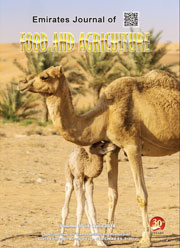PRODUCTION OF TRANSGENIC INDICA RICE (ORYZA SATIVA L.) CV. MR 81 VIA PARTICLE BOMBARDMENT SYSTEM
DOI:
https://doi.org/10.9755/ejfa.v22i5.4823Keywords:
Rice embryogenic callus, Particle bombardment, gusA gene, hph geneAbstract
Embryogenic callus of rice (Oryza sativa L. cv. MR 81 and Taipei 309) were bombarded with the recombinant pRQ6 construct carrying the hygromycin phosphotransferase (hph) and ?-glucuronidase (gusA) genes using particle bombardment system. Transformed embryogenic callus that are capable of growing on selection media containing 50mg/L hygromycin B developed GUS expression based on blue colouration in the presence of 5-bromo- 4-chloro-3-glucuronic acid. These embryogenic callus consisted of both transformed (blue) and non-transformed (yellow or white cells). The integration of hph gene into rice genome was confirmed by Southern blot hybridization. Regenerated plantlets were transferred to soil in pots, and grown to maturity under glasshouse conditions. Rice (R1) seedlings derived from R0 transgenic plants germinated normally in a medium containing 50mg/L hygromycin B and also expressed GUS activity as revealed by histochemical assay. The Southern blot analysis further confirmed the insertion of the hph gene in the rice genome of the R1 plants of MR 81 and Taipei 309. A simple and economic procedure for screening large number of putative resistant rice plants was described.










 .
. 